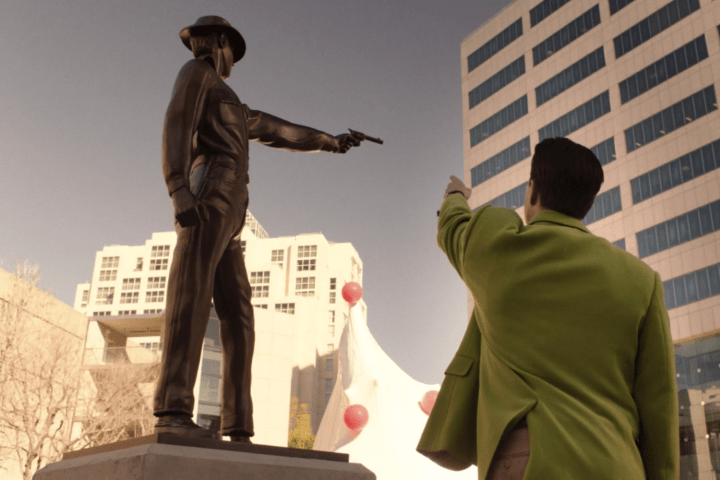
Yet Cooper’s time living the life of Dougie Jones, his insurance agent doppelgänger, is par for the course with the new season, which has so far bucked the popular trends in television storytelling, just as the first season of Twin Peaks toyed with the tropes of its contemporaries, soap operas. In the age of binge watching, shows that still air weekly have to figure out how to pace themselves to keep audiences coming back week after week. Twin Peaks’ answer seems to be a refusal to play the game, telling, in its own way, a story about the passage of time and the difficulties of returning home.
Cooper struggles to operate his body
Since returning to the “real” world after his decades in the Black Lodge, Cooper has seemed a shell of himself, barely able to speak or act on his own. To the world, he is Dougie Jones, an insurance agent. Dougie’s wife dresses him, drops him off at work, and must even unbuckle his seatbelt and push him out of the car.

After years in a spiritual dimension where time flows any which way, Cooper seems completely lost, having returned to his flesh. Hunched over in the hallway at work, clutching his groin as he seems unable to locate a bathroom, he seems more like a toddler than the charming, competent Cooper of Twin Peaks past. It’s an undignified position for him to be in.
It makes sense, given where he has been. Having existed for so long without a body, the constraints of flesh — the urge to consume, to fill oneself up, followed by the swelling and straining of a bladder — must be disorienting. Cooper’s struggle also works on a thematic level. Twin Peaks: The Return has so far kept the old characters and locales at a distance, only occasionally checking in with characters like Hawk and Shelly. Time has passed, the world has changed, and it just isn’t easy to go home again.
Becky’s story shows that the world changes, except when it doesn’t
So far, the actual town of Twin Peaks has been a minor part of The Return, which has expanded the show’s setting New York, South Dakota, even Argentina. When the show does go back to Twin Peaks, the feelings it evokes are complex. On the one hand, there are the familiar faces: Shelly, Bobby, Lucy, still working the same jobs, still drinking at the roadhouse at night.
But the differences stand out. The Bang Bang Bar is no longer hosting Julee Cruise — not yet, anyway — but new acts like Chromatics. Doctor Jacoby still wears his red and blue shades, but now he broadcasts conspiracy theories to audiences via internet streaming, which Jerry Horne watches while smoking now-legal weed.

Even as the world has changed, some things stay the same. Shelly’s daughter Becky (Amanda Seyfried) is the latest incarnation of a common figure in Twin Peaks: The good girl caught up in bad business. After borrowing money from her mother, Becky gets into a car with her boyfriend, disheveled and unemployed, who offers her a line of coke. Despite some reluctance, she takes it, and drifts into a reverie, the camera focusing on her face the car rumbles on.
It’s a scene with many of Lynch’s signature touches — a beautiful girl, drug-induced euphoria, a vintage ‘60s pop song playing in the background — and it reveals that, no matter how much time may trample aspects of society, human behavior remains the same. Like Laura Palmer before her, Becky is a seemingly lovely young woman on a dark path of drugs and dangerous men.
The original Twin Peaks was a product of its era, not just in the genres it drew from, but in the world it presented. The opening credits of the first two seasons showed an industrial society, with factories running, machines sharpening saw blades. These images are absent from the new credits. The world has changed, and Twin Peaks, like Cooper, is adjusting. What hasn’t changed is the show’s willingness to be different, no matter how obtuse it may come across.

As with Cooper, the show refuses to give us an easy grasp on things, even in its format. After Parts 2-4 ended with musical performances, Part 5 subverts expectations, rolling credits as Cooper stares at a statue of a lawman, drawn to an emblem of his former life.
Here’s what you missed in Twin Peaks: The Return, Part 4.


